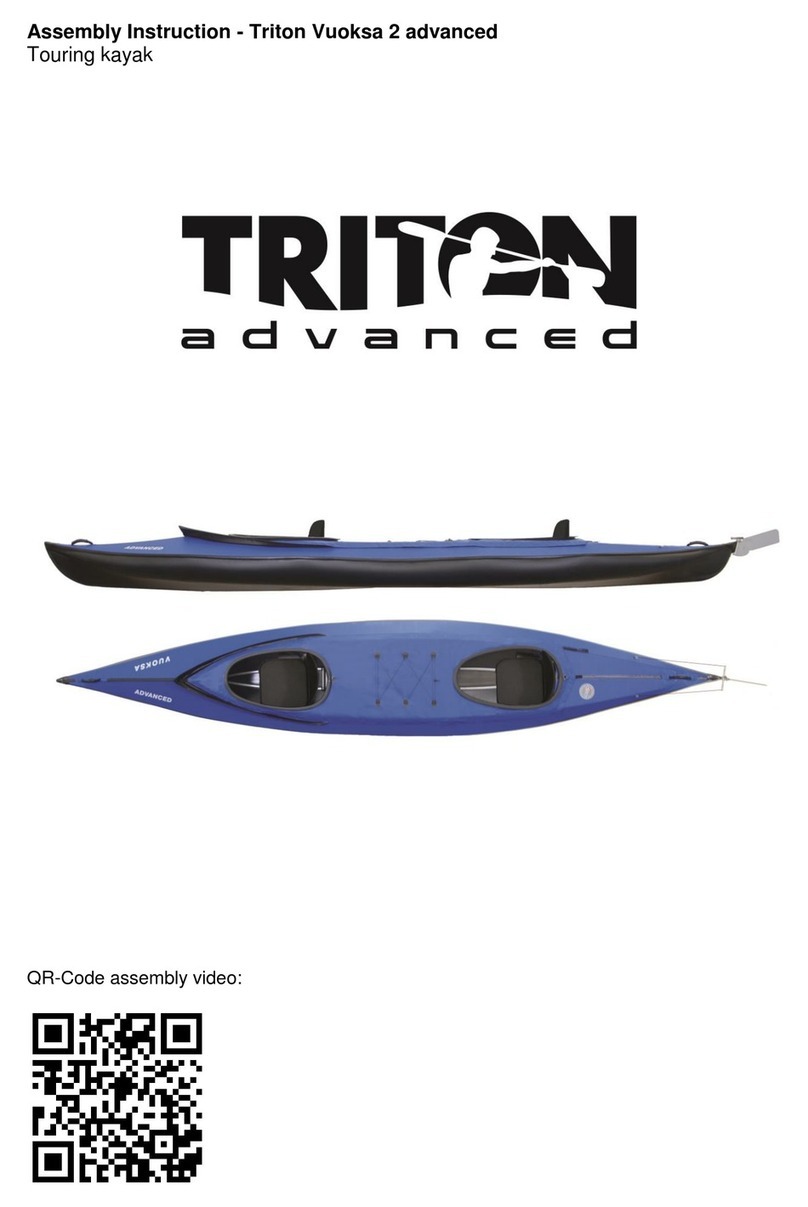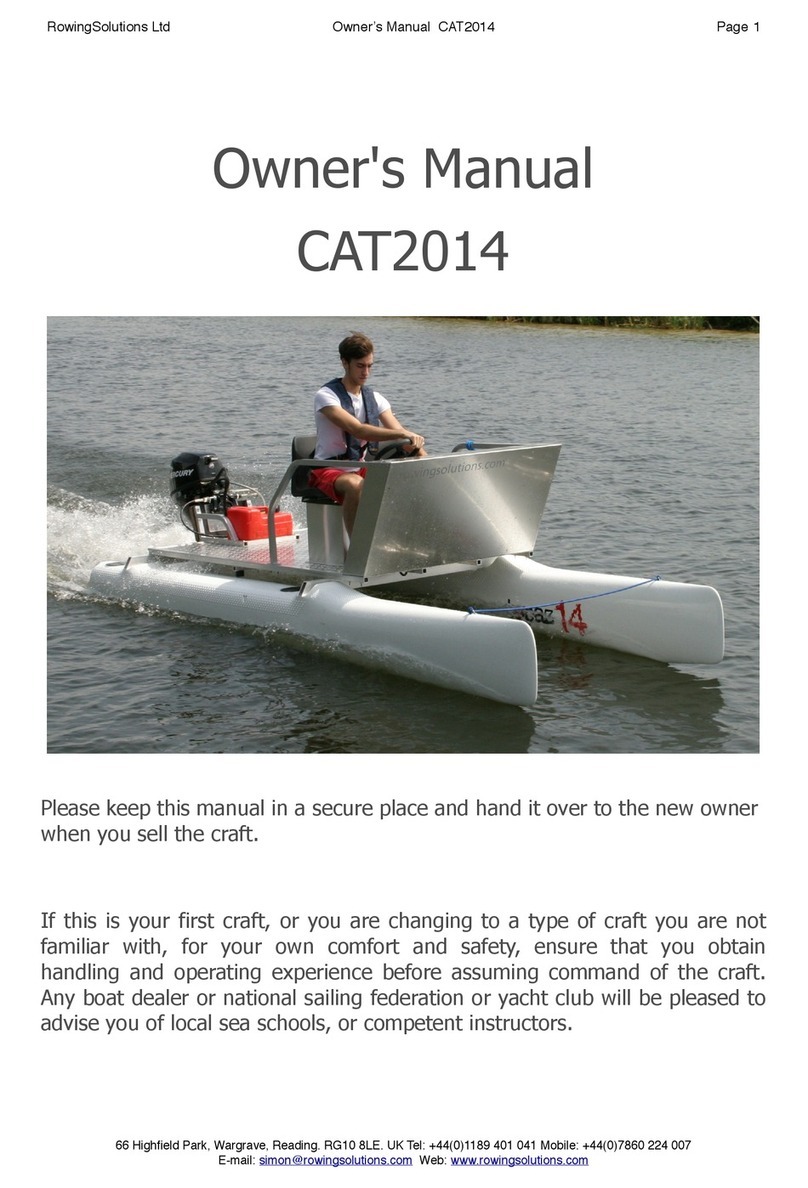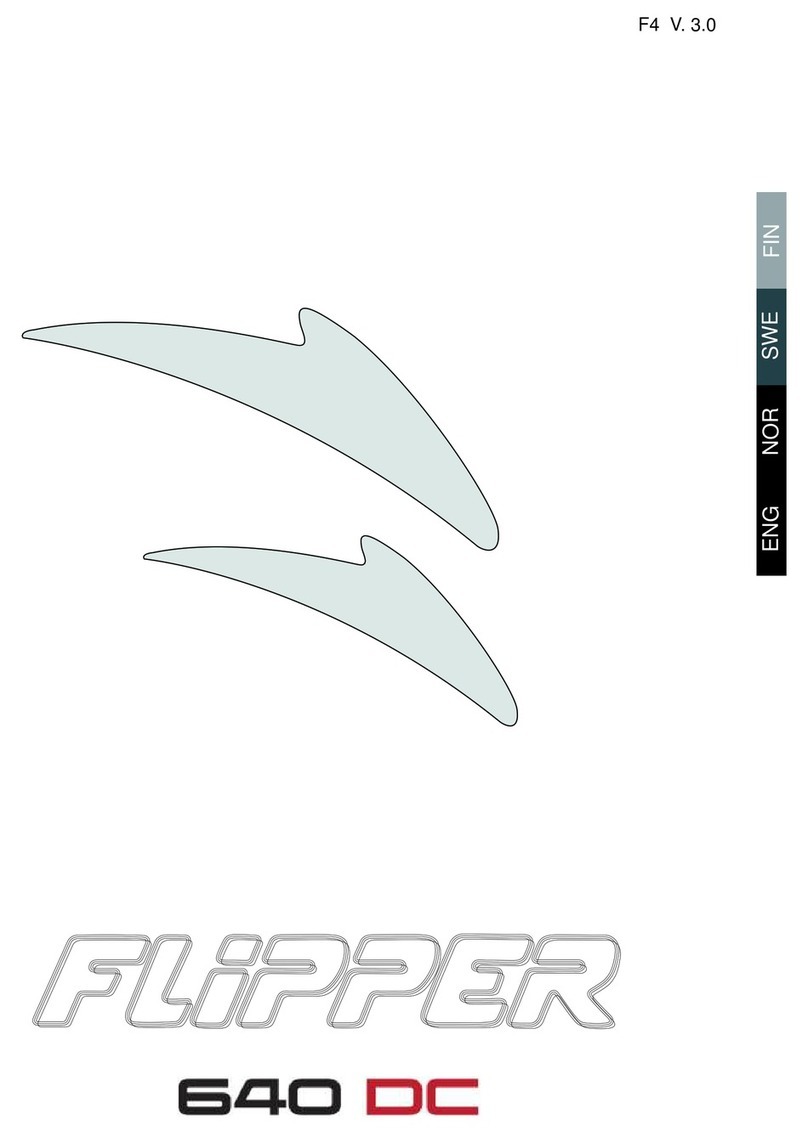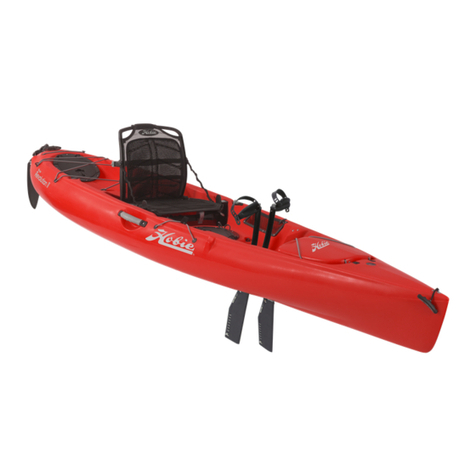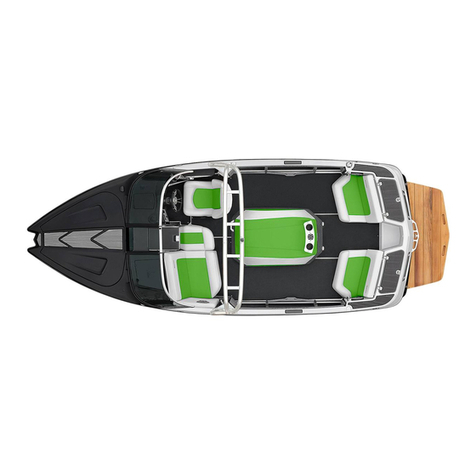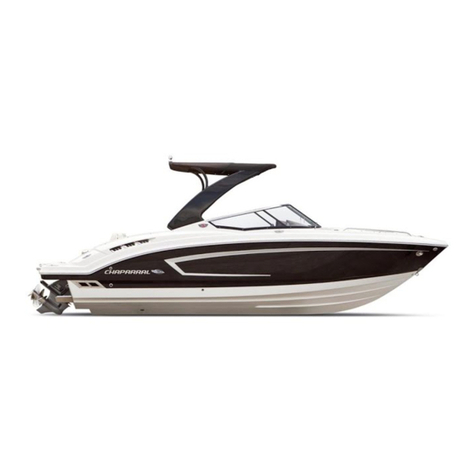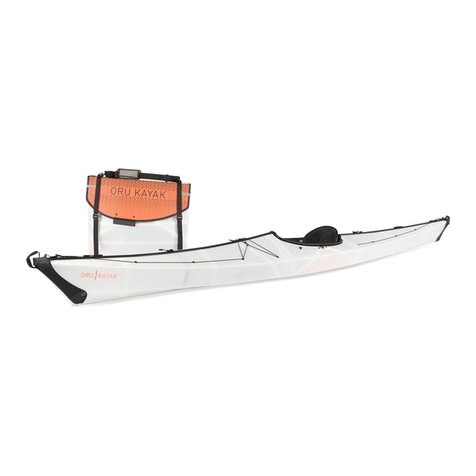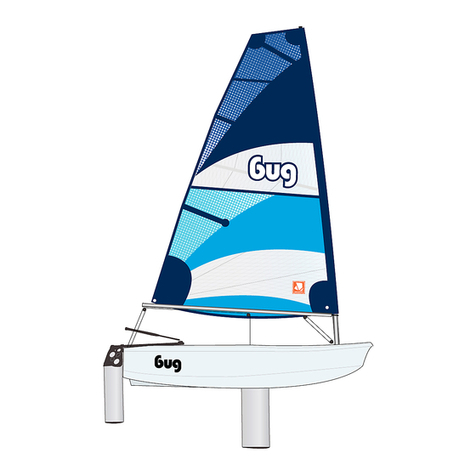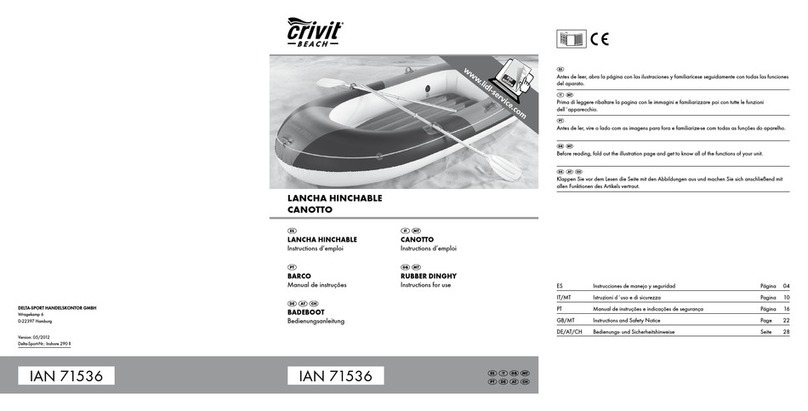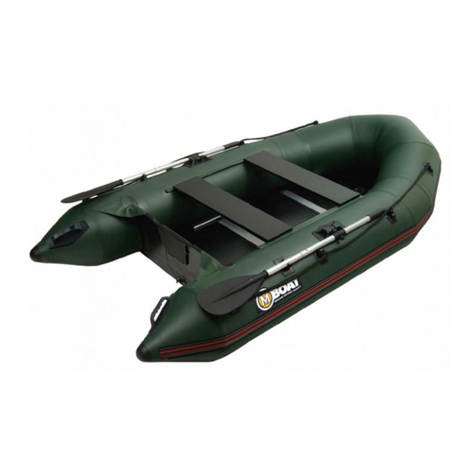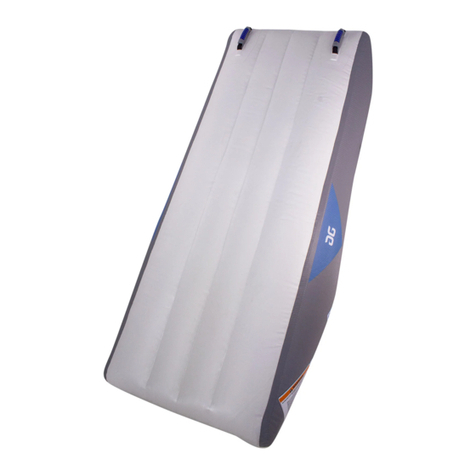Triton advanced LADOGA 2 ADVANCED User manual

A
SSEMBLING
I
NSTRUCTION
-
T
RITON
L
ADOGA
2
ADVANCED
Touring and sea kayak
Assembly video:

2
Assembling Instruction - Triton Ladoga 2 advanced
Dear Customer,
At first: please do not be alarmed by the extent of these instructions!
The assembling instructions are very detailed and almost every step is illustrated. You will notice that it
will help you at one point or another. After a few times and with a little practice you won’t need the
manual anymore.
You have purchased a Ladoga 2 advanced - a powerful kayak with extremely high stability and
stiffness, which was awarded among others by “Kanu-Magazin” with the "Super Tip".
The Ladoga 2 advanced has been one of the best-selling folding kayaks in Europe in recent years.
The body stiffness results from the high structural performance of the frame; on the other hand the hull
is designed to fit the frame perfectly. This is why the first few setups are power intensive, since frame
and skin have to adapt to another (the hull expands a bit while/after assembling the first couple of
times). The assembling gets then easier each time.
Please take your time for the first assembling to learn about the special features. It is strongly
recommended following the single steps in the instructions carefully! Otherwise, it will be
unnecessarily difficult. After some practice you will build it up without much hassle in about 30
minutes. Always keep in mind that no one is born a master, and the individual assembling has to be
learned for each folding boat. As a "reward" of the assembling you get a fast and stiff touring kayak,
which is characterized by excellent handling and a strong hull!
Please check the assembly videos in ourt YouTube channel: https://www.youtube.com/faltbootde
If you have any questions, your dealer will be happy to assist you. Otherwise you can also contact us
directly - as an importer (call: 0049/731/4007675, mail: kontakt@out-trade.de).
Please also consider the instructions of “Care and Accessories” at the end of this manual. Especially if
you are planning extensive tours in salt water, which requires special care!
Brief overview of assembling:
1. Assembling bow: Attach 2x4x stringer elements without lock, 4x stringer elements with
lock and install cross rib #1 and #2 (#2 with ridge bar)
2. Assembling stern: Attach 4x stringer elements without lock, Attach 4x stringer elements
with lock and install cross rib #6
3. Attach the matching keel forks and the double keel elements (stern= keel ladder with riveted half
tubes), insert them into the hull and tension the keel
(Therefore take the stringer elements out the skin!)
4. Insert seats
5. Close the stringer
6. Insert and close the coaming
7. Install cross ribs #3, #5, #4
8. Install half cross rib in front of the seat and mount the rudder system
9. Inflate sponsons
This short description should provide a general overview of the basic structure of assembling. For the
first few times please consider the following detailed assembly instructions and read them
carefully before you get going:
1)
Overview parts:
Please first get all parts out the pack and spread them out. It is best to sort the parts
according to the content list.

3
1) 8x Stringer element with lock:
2) 13x Stringer element without lock
3) 4x Sleeves, small
4) Keel ladder with riveted half tube
5) Keel rod (with 2x clips)
6) Keel fork (one with open end, one
with hemispherical end)
7) 2x Bent coaming rod (wider diameter)
8) 4x Coaming rod (2x of them with D-
rings; wider diameter)
9) 2x Sleeve, big
10) 2x Ridge bar (identical)
10a) Deck rod (supports the deck
between the cockpits)
11) Bow segment
12) Stern segment
13) Half cross ribs, supporting the seats
(upper=stern seat, lower=bow seat)
14) 2x Seat, 2x back rest
15) 6x Cross ribs
16) Hull
17) Deck
18) Cover for loading hatch
19) Rudder system
20) Repair kit
21)
Backpack and waist belt (no pic)
1)
2)
3)
4
)
5)
6
)
7
)
8
)
9
)
10)
11
)
12
)
13
)
14)
15
)
16
)
17
)
18
)
19
)
20
)
#1
#2
#3
#4
#5
#6
10
a
)
14
)

4
2)
Assembling Bow
1x Bow segment
9x Stringer element without lock
4x Stringer element with lock
1x Keel rod (with 2x clips)
1x Keel fork with hemispherical end
1x Ridge bar
1x Cross rib #1
1x cross rib #2 with steel hooks on top
First clip a stringer element without lock on
each of the five elements at the bow
segment. The stringer elements will lock in
place by the snap buttons on the bow
segment.
Also clip on the keel rod to the bow
segment.
(This should result in the image on the left)
Then take cross rib #1.
The cross ribs are inserted all in the same
way:
First place the cross rib
diagonally...
Make sure, the open end
on the cross rib points
towards the open end of
the keel's "counterclip".
…then slide the clip onto the “counter clip”
on the keel rod and slowly right it up.
The cross rib is now locked and firmly
connected to the pickup element.

5
Then clip the stringer elements into the C-
clips of the cross rib.
Also clip in the centered stringer element
(arrow) on top of the cross rib. This will use
as an extension to the ridge bar
Now insert another stringer element without
lock to each of the side stringer (4x), and
then again one stringer element with lock
(4x).
Attach the keel fork with hemispherical ends
onto the keel rod, with the clips facing
upwards.
Take cross rib #2 and one of the two
identical ridge bars.
Hook the cross rib to the ridge bar.
Join the cross rib diagonally with the hooks
pointing forwards to the openings at the
ridge bar.
(see left images)
Now, the cross rib #2 is simultaneously (the
wider of two cross ribs with steel hooks at
the upper end) connected to the keel rod.
The ridge bar is inserted into the extension.
(If you have clipped the extension into the
upper clip of cross rib #1, release it again for
the step above!)
snap button

6
The connection of the cross rib #2 and the
insertion of the ridge bar into the extension
element have to be done simultaneously.
Then clip the extension element on the
upper clip of cross rib #1
Ensure, that all snap buttons face inside
the kayak:
The bow element is fully assembled and
should result in the image on the left.
3) Assembling stern
You need:
1x Stern segment
4x Stringer element without lock
4x Stringer element with lock
1x Keel fork with open end
1x Keel ladder with riveted half tube
1x Cross rib #6 (the smaller of two
cross ribs with steel hooks)
1x Ridge bar
First clip a stringer element without lock
on each of the four side ward elements at
the stern segment, then one stringer
element with lock.
The keel fork with the open end is
attached to the keel of the stern segment.
Then put the keel ladder with riveted half
tube to the keel fork.
snap button

7
The cross rib #6 is inserted similar to the
cross rib #2.
Which means, that the remaining ridge
bar is joined to the cross rib and then,
while pushing it to the pickup element on
the keel rod, it is inserted to the pickup at
the stern segment.
Then clip the stringer elements to the
cross rib #6.
Ensure, that all snap buttons face inside
the kayak!
The stern element is fully assembled and
should result in the image on the left.
3) Inserting bow and stern element / tensioning the hull / Inserting the seats
Spread out the hull.
Open the hatch at the bow and open the
waterproof roll closure.
Then insert the bow element into the hull.
Make sure to place the frame centered
Now push the frame flatly into the bow.
It is best to kneel inside the boat and
take the frame at the back ends of the
stringer elements.

8
Try to orientate at the ridge bar and the
reinforcement strip on the deck to insert
the frame centrally. Also, a look through
the hatch can help.
Push the frame firmly into the bow as far
as you can.
Make sure, the two pickup elements at the
ridge bar are pointing towards the center
of the kayak (this is where the coaming is
inserted later on).
On the left you see the insertion of the
stern section.
Proceed likewise with the stern.
Push the frame flat into the bow and as
far as you can.
Make sure to take the filling tubes for the
sponsons between the stringer elements.
Now bow and stern are getting connected
and tensioned. In order to do this, remove
the split pin on keel ladder.
And then proceed exactly as described.
Please read through the following
section before going to work:
The keel fork of the bow with its
hemispherical ends is mounted to the
riveted half-tubes of the stern’s keel
ladder.

9
That means pulling up stern and bow
("stern over bow"). Hang the keel fork
under the keel ladder (with the riveted
half-tube) and gently push the whole thing
down.
IMPORTANT:
Prior to this operation take the stringer
elements out the skin. This will relieve
the keel and will avoid any blockage.
You can pull up bow and stern without any
problem. The skin can flex and the frame
won’t jam.
(You see this very clearly on the pictures
on the left).
If the stringer elements are not removed
from the skin, an unfortunate pressure on
the keel rods is created, which may
damage them.
After joining keel fork and ladder, slowly
press them both down.
Put the stringer elements back into the
hull (see the left picture).
Slowly press the aligned keel rods down.
Especially the first time a high tension
occurs. This is normal and will decrease
with further assembling.
Then insert the split pins back through the
holes and wrap the rubber around it.

10
Installation of the hanging seat
The filling tube to inflate the seat always
faces forwards, towards the bow.
The front seat is a bit more narrow in the
front, than in the back.
The back seat (the other way around)
wider in the front than in the back.
(see arrows in the left picture).
The seats reproduce the boat's shape.
(Front: narrow to wide; back: wide to
narrow)
Take the Front seat and insert the lower
stringer elements (closest to the keel).
Then push it far towards the bow.
It might help to slightly press the two
stringer elements inside the boat, in order
to place the seat easier.
Proceed identically with the back seat and
push towards the stern.
It should result in the image on the left
(the inflating tubes always point towards
the bow).
Connecting the stringer
The connecting of the stringer elements is
a process that you have to learn.
Especially the precise alignment of the
"locks" to another is crucial to prevent
jamming. This connection technology
adds a lot to the overall stiffness of the
boat.
For one, you "press" the excess length,
the two stringer element with lock of bow
and stern have, "into the boat length" and
on the other hand, this connection is
stable, both on pressure and on tension.
A huge advantage on the water!
front seat
back seat

11
Note: You can connect the stringer
elements both by pushing them into the
boat, or by pulling them into the boat from
the opposite side.
Give it a try, what suits you better.
Work your way from the bottom up. Start
with the lower stringer elements.
First take one of the four small sleeves
and slide it onto one of the stringer
element (see top picture).
Then take the stringer element (as in the
second picture) and align the locks
exactly to another.
The mouths have to "look at each other".
This is crucial, otherwise it will be
unnecessarily difficult.
Push both stringer elements towards the
boat's center. This requires some strength
(especially for the first few times). The
process can also be done - as mentioned
earlier - from the other side, by pulling the
stringer elements to yourself.
Then connect the two locks. You must
align the locks exactly to another, in
order to prevent jamming.
Do the whole process - especially the first
few times - as slowly as possible and
without hassle.
Let the stringer then slowly come back
and make sure that the two elements
form a straight line.
This is very important, too. Once there is
no straight line, the stringer elements will
jam.
If they form a straight line, you still can
adjust some little imprecision, by pressing
with your thumb.

12
Then slide the sleeve over the connection.
Repeat the process with the remaining 3
stringer elements, from bottom to top.
Especially at the beginning you have to
practice a bit until you find the right way.
But then it is surprisingly easy. The
gratitude is an extremely stiff and strong
connection that contributes a lot to the
performance of your folding kayak.
4) Installation of the coaming
For the coaming you need:
2x bent coaming rod
(with D-rings
)
4x straight coaming rod
(2 of them with D-rings)
Connect one of the bent rods with one of
the straight rods with D-ring.
Insert these with the bend part ahead into
the coaming channel. And that into the
part with the largest gap in the rear third
(see the left picture).
Then slide this first half of the coaming
through the channel to the front.
Especially at the first assembly you have
to make sure, that the rod runs through
the channel.

13
It is much easier to push the coaming rod
“from the inside of the boat”, rather than
“from above”. This creates a “straight line”
and prevents jamming inside the channel.
Thus, the rods are much easier to push
into the channel!
Then connect the coaming rod with the
pickup element in the bow by sliding it
onto it. Just pull the flexible part a bit
toward you, so that there is also a straight
line. Thus the connection of coaming rod
is much easier.
Proceed likewise on the other side.
NOTE:
You can also insert the coaming rods
separately (before you connect them).
First the bent rod, then the straight one
and connect them inside the channel.
Proceed how it suits you best!
Then insert the two remaining coaming
rods without D-rings in the channel
towards the stern.
Connect them with the pickup element in
the stern.
Take one of the two bigger sleeves and
put it onto the coaming rod.
The connection of the coaming rods is
done similarly to the connection of the
stringer.

14
Align both locks exactly on another. Then
press the rods slightly downward or
upward - depending on how the
connection works better.
Snap the locks and return rods. Then slide
the sleeve over it.
Important:
Again, it is crucial to form a straight line
and then slide the sleeve over the locks.
You can also pull the two rods towards
you, if you want to do it from the other
side.
NOTE:
Some customers proceed in reverse
order, connecting stringer and coaming.
That is, they connect bow and stern,
THEN connect the stringer elements first
and insert the coaming afterwards and
connect it.
Try that variation, if you want and proceed
how it suits you best!

15
5) Installation of the cockpit cross ribs and final installation of the seats
Please also follow the exact order in
the next step!
At the top you see cross rib #5, which is
the lowest one and sits behind the back
seat.
In the middle is cross rib #4 with a clip on
top (to clip on the ridge bar)
At the bottom cross rib #3 with a steel
pickup element on top.
Push the front seat as far as possible
towards the bow.
Then take cross rib #3 and join it
diagonally as usual.
Support a little by pulling the cross rib to
the pickup elements with the other hand
(see picture)
Raise the cross rib slowly.
Please make sure, not to snag the cross
rib on the coaming channel
Then clip the stringers into the cross rib's
clips.
Best is to grab the cross rib from the
opposite side with your thumb above the
clip. Then press the stringer from the
bottom into the clip. (see picture)
Thus, you get the best leverage and need
less power.
Please do not clip in the coaming, yet!
#3
#4
#5
grab with your thumb above
the clip
press from bottom to top

16
Pull the seat backwards. Grab from
behind to the front part of the seat
(as on the picture).
Pull as far until the seat is located
approximately 8 cm in front of the cross
rib #3.
(you will find out, what position suits you
best quickly).
Now push the back seat towards the
middle (close to the sleeves).
Then install cross rib #5.
Try to lead the two top clips on the side
into the stringer while joining the cross rib.
That will save you from having to push up
the stringer elements into the clips
afterwards.
Then pull back the seat towards cross rib
#5 (until app. 8cm).
Install cross rib #4 in the same way.
Then clip the coaming into the big top C-
clips of the cross ribs.

17
If this is a bit difficult, "push" the coaming
with your palm over the cross rib.
(as shown in the left picture)
Now take the two half cross ribs. They use
as support for the seats and ensures that
the weight of the paddler does not press
on the stringer element.
It is therefore essential to install!
The lower one is for the back seat, the
more bent one for the front seat.
First place he half cross rib diagonally and
then push it into position! Otherwise is not
possible to install.
Clip one end onto the stringer right in
front of the seat. Place the other end
diagonally on the lower stringer and a
bit further to the front.
Then slide the half cross rib into position.
The half cross ribs then sits directly in
front of the seats.
half cross rib for
the back seat
half cross rib for
the front seat

18
Now install the back rest.
Lead the upper strap through the D-ring
on the coaming, then lead it back through
the clip.
Set the desired position.
The lower straps are fixed on the cross rib
behind the seat.
Now inflate the sponsons by using the
filling tubes. These are then connected
with the connecting pipe. By connecting
the tubes you will provide a pressure
equalization, which guarantees an ever
symmetrical underwater hull.
It is best to inflate the sponsons with the
mouth. When you notice, that it gets
harder to inflate, it is usually the right
pressure.

19
6) Deck lining / Deck / Rudder system
In the repair kit you will find the deck lining
and other parts for the rudder system.
The deck lining can be installed in
different ways.
One suggestion is, to form a loop, lead it
through the middle D-ring and lead the
two ends back through the loop.
(as shown in the left picture)
But you are free to attach the lining as you
want.
Cover for the loading hatch:
ATTENTION: At first the tension is very
high! Please put the cover over the hatch
and leave it there for a while. So the
elastic strap can extend a bit and it gets
easier the next time. A certain tension is
normal, though for the cover staing in
position.
Please secure the hatch cover at the first
assembling to the deck lining on the fore
ship. It can stay there, and you won't
loose it.
Lay it "on the back", run one hanger under
the lining…

20
...and then the whole cover through it.
Now the hatch cover is securely
connected to the lining and stays on
board.
Now attach the deck.
The deck is attached by Velcros.
Begin at the top of the cockpit fix it.
You can also paddle your Ladoga 2
advanced "open", if you like.
If you use the deck, though, clip in the
ridge bar (10 a) in the overview) to
support the deck between the cockpits.
Your boat is now fully assembled. Have fun on the water!
Other Triton advanced Boat manuals
